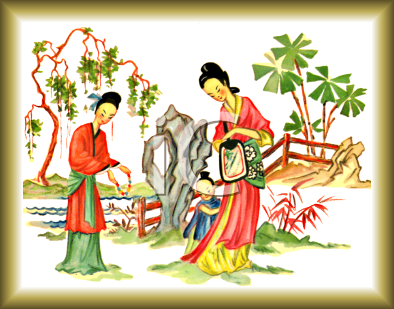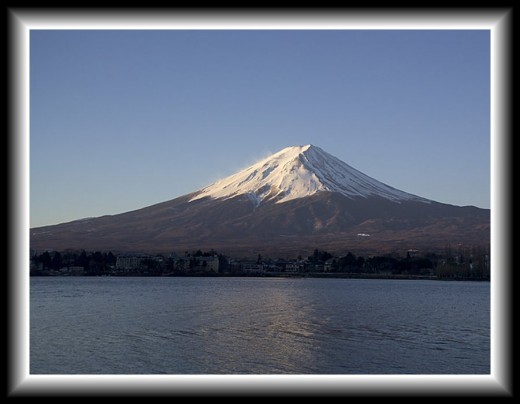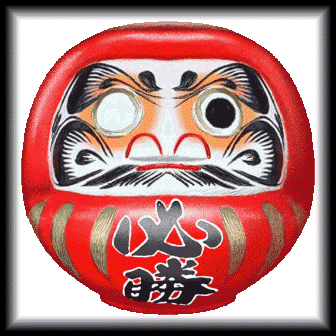Japanese and Asian Culture


Strange Cultures?
Many westerners may view Japanese and other Asian culture as being strange and vice versa. Generally speaking comparable Asian customs have their roots in ancient China. These Pacific Rim inhabitants share similar physical features not immediately distinguished by some. However, those who have lived amongst the people for a while are able to discern the subtle differences.
Surprisingly, there exists some animosity between various Asian countries and Pacific due to past conflicts. For example, many Okinawan’s still harbor resentment against the Japanese, although the Okinawan prefecture is now part of Japan. In centuries past, Japanese pirates invaded their country pillaging and looting. During these raids many young women were taken captive and sold into prostitution.

Mount Fuji

Tragic Events
An Okinawan practice was born out of these tragic events. Many of the women had their bodies covered in intricately designed tattoos to make themselves less attractive to the marauding Japanese. This practice endured into relatively modern history. Up until recent times some of the very old women could still be seen with these tattoos.
I was lucky to have lived in Japan as a child of 6 years old, being a “military brat”. I went to Okinawa twice while in military service myself. My experiences as a youngster in Japan are still vivid memories.
When my family arrived at Tachikawa Air Force Base, Japan in 1959 , my first sight was the majestic Mount Fuji. Mount Fuji, is the highest mountain in Japan towering a 12,388 ft. and is one of Japan's 3 holy mountains. It last erupted in 1707–08. The Japanese believe it was first ascended in 663 by an anonymous monk and the volcano has been revered as sacred ever since.

Dharma Good Luck Doll

Dad gave us a few Japanese coins and explained their monetary value compared to the American dollar…which is now considerably less. We were to learn many other interesting things, some shocking. I once saw a Japanese boy with his back turned to me urinating into a sewage ditch in public. Indeed, this unsanitary seeming act might be odd to Americans. I was confused until I learned this was acceptable behavior in their country.
Japan is very small, land mass wise, but has a very large population. Japanese are thus forced to live in close proximity to each other. That being the case, in such a situation, the space surrounding an individual is to be considered private and one is required to ignore the scene.
Another interesting thing I remember is Americans didn’t purchase produce from the local economy. At that time local farmers also used human waste as part of their fertilizing practice. I don’t know if this is still done.
Of course in the American dependent elementary schools, we were taught about some Japanese customs. I remember a curious looking round figure known as a Daruma or Dharma doll. The Dharma doll is a hollow, round doll modeled after Bodhidharma, the founder of the Zen sect of Buddhism. They are usually red and depict a bearded man. Though considered a toy, they are regarded more of a good luck talisman. The toy is usually made of paper mache and is weighted in the bottom. Therefore if it is knocked over it will return to an upright position, a symbol of perseverance.
A majority of Japanese, as well as Okinawan’s observe ancestor worship in what is known as the Obon festival. Obon is an important Japanese celebration. It is believed ancestors’ spirits return to their homes to reunite with family. It is an important family gathering time and originally celebrated around the 15th day of the 7th month in the lunar calendar. Nowadays, Obon is a 3 day observance celebrated around August 15th. People clean their house and place a food offering for their ancestors’ spirits in front of a Buddhist altar. I often wondered what would happen if the plates of food ever turned up missing.

Children's Day
Another popular observance in some Asian cultures is Boy’s day and Girl’s day. May 5 is "Children's Day", a day to stress respect for the character of children. In the latter half of April to early May, huge, gay colored carp-like streamers made of paper or cloth with long red and white ribbons are a common sight. A carp is flown for each son in the family, a very large one for the eldest, the others ranging down in size. These carp fill with wind and seemingly swim in the air.
Girls are the guests of their brothers on this day just as boys are guests of their sisters on Girls' Festival on March 3. The carp is the symbol of the Boys' Festival because the Japanese consider it the most spirited of fish, full of energy and power.
Like many other things in Japanese culture, the art of origami had its origins in China. The name comes from "oru" meaning to fold, and "kami" meaning paper. It’s commonly accepted paper was first made, and folded, in China in the first or second century. You've probably seen origami and not realized it. A small square of paper can be magically transformed into a beautiful crane or majestic lion.
Of course, in early times paper was expensive and rare, so it was usually a hobby for only the rich. Origami has transcended many borders and ethnic backgrounds and is practiced virtually everywhere today.
We may find some foreign customs odd, but we also have our own which seem as strange to them. There were Japanese pirates as well as our history did. Slavery was not uncommon in our past either. Japanese had Samurai and we had the cowboy. Maybe were not as different as we first thought.







